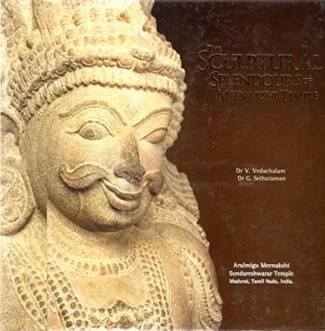
The Sculptural Splen...
The Sculptural Splendours of Meenakshi Temple
by: Dr. V. Vedachalam , Dr. G. Sethuraman₹1,100.00 Original price was: ₹1,100.00.₹990.00Current price is: ₹990.00.
ISBN: 9788193883907
Year Of Publication: 2019
Edition: 1st
Pages : 195
Bibliographic Details : Bibliography
Language : English
Binding : Hardcover
Publisher: Arulmighu Meenakshi Sundareshwarar Temple
Size: 24
Weight: 875
“The Sculptural Splendours of Meenakshi Temple” Cancel reply
- Sale!Bagore-Ki-Haveli by: Piers Helsen
₹95.00Original price was: ₹95.00.₹86.00Current price is: ₹86.00.Rajasthan boasts of many beautiful monuments and structures of the royalty which stand as evidence to Indias glorious ancient culture and heritage. The Bagore-ki-Haveli is one such edifice. The book takes us through the architectural wonders of the haveli to reflect what it had been the royal household of Maharaj of Bagore. With many splendid colour photographs of its impressive rooms, large balconies, wide terraces and attractive, leafy courtyards, it reconstructs the royal household and its functioning, customs and religious practices, costumes and ornaments, and arts and entertainment. It captures the artistic brilliance of the exquisite glass inlay work and paintings in the restored haveli including a gallery of Madhurastakam paintings describing the loveliness of Sri Krishna and his divine lover, Radha. The work highlights the charming style of the haveli that typifies the best of Mewari architecture but has a unique character of its own. The book, a visual delight presenting a glimpse into the royal lifestyle and splendour of the time, will be invaluable to historians studying the history, art and architecture of north India in the centuries before Indias independence and will also interest readers in general as well as tourists.
- Sale!Absence of the Buddha Image in Early Buddhist Art by: Kanoko Tanaka
₹1,500.00Original price was: ₹1,500.00.₹1,350.00Current price is: ₹1,350.00.It is next to impossible today to even think of Buddhism without the presence of the Buddha image! The image of the Buddha, in truth, has not only come to symbolise the essence of Buddhism but is also a brilliant expression of the cultural/artistic achievements of the Buddhists since ancient times. Surprisingly, the Buddha image developed at a later stage of the evolutionary process; after the parinirvana of the Buddha, the Buddhists for a considerable time beheld the Buddha and experienced him in their own minds without taking recourse to the Buddha image itself. In Absence of the Buddha Image in Early Buddhist Art, Dr. Tanaka, a well-versed scholar, has for the first time ever explored the absence of the Buddha image in Buddhist art particularly in the period from third century bc to late first century ad in order to rediscover the significance of this phenomenon. Dr. Tanaka observes Bharhut and Sanchi sculptures to point out the most essential motifs and elements of stupa-art design the visible facts pertaining to the absence of the Buddha image. The author studies the religious, philosophical, artistic and political significance of the visible facts, highlighting the concept of the empty throne as the motif representative of that absence. She applies the empty throne concept to the sanctuaries of monotheistic religions, and thus undertakes a comparative study of Buddhism and other religions, particularly, Zoroastrianism, Judaism, Christianity, Islam and Sikhism to suggest that present-day discussions on the linkage between religions can centre on this theme. The dexterous handling of the topic combined with the authors use of first-hand research material makes this an erudite study. The directness in the authors approach and the unwavering eye on the theme sustains the interest throughout. An abundance of visual material, i.e., drawings and photographs, and tables immensely aid in analysis of the visible facts. This intense work on a rich theme offers well-researched and interesting material that will be useful to scholars of religious studies, fine arts and even philosophy.
- Sale!Elements of Indian Art by: S.P. Gupta, Shashi Prabha Asthana,
₹1,200.00Original price was: ₹1,200.00.₹1,080.00Current price is: ₹1,080.00.The book is a study of the fundamental principles of ancient Indian art and architecture, dealing with essentials of Hindu thinking and practice of art like the Hindu view of Godhead, iconography and iconometry, and symbols and symbolism in Hindu art. Referring to major classical Indian literary works shedding light on art and architecture, it undertakes a survey of Indian art and temple architecture from the 3rd century bc through the medieval period, highlighting the directional changes that marked the history of art, specifically sculpture and painting. It elaborately views the various terms and concepts associated with the field of art and iconography like mudras, asanas, pithas, explaining the nature of Buddhist and Jain deities as well as those of Hindu sects like Saivism, Vaisnavism and Saktism. Pointing out the importance of studying Hindu temple architecture in order to fully appreciate Hindu art which was meant for propagation of dharma, it analyses the basic features of the temple architecture and its regional variants. Tracing the differences in conception and delineation of a Hindu temple, a Muslim mosque and a Christian church, the research focuses particularly on the principles of visualisation of symbols and signs in Hinduism and Christianity. It also reveals how the West has viewed Indian literature and art, exposing the inner contradictions of some European thinkers who while praising literary works of Kalidasa and others condemned the Hindu images. The work contains more than 200 illustrations, half-tone and line drawings, that make the discussion easy to comprehend for a range of readers — scholars, students as well as laymen
- Sale!A Child of Destiny by: K. Ramakrishna Rao
₹950.00Original price was: ₹950.00.₹855.00Current price is: ₹855.00.““This book is an autobiographical essay of a man who rose from a humble beginning in a remote village with one room elementary school to attend the University of Chicago, with its impressive Gothic structures ranked among the best in the world; and to become the Chancellor of a prestigious university in the country. Dr Rao attributes all this to destiny. Destiny in this view constitutes the circumstances in which one is situated; but it is the deftness with which one manoeuvres himself through the maze of circumstances that really matters in the final analysis.
The book is offered as a possible source to inspire the aspiring individual not only to set noble goals but also find possible ways of reaching them. Blessed is the one who moves his way upward without hurting himself or others in the process. This has been the guiding principle of Dr Rao.”
“ - Sale!Rated 5.00 out of 5Sanskrit Parsing by: Amba Kulkarni
₹900.00Original price was: ₹900.00.₹810.00Current price is: ₹810.00.India has a rich grammatical tradition, still extant in the form of Panini’s grammar as well as the theories of verbal cognition. These two together provide a formal theory of language communication. The formal nature of the theory makes it directly relevant to the new technology called Natural Language Processing.
This book, first presents the key concepts from the Indian Grammatical Tradition (IGT) that are necessary for understanding the information flow in a language string and its dynamics. A fresh look at these concepts from the perspective of Natural Language Processing is provided. This is then followed by a concrete application of building a parser for Sanskrit using the framework of Indian Grammatical Tradition.
This book not only documents the salient pieces of work carried out over the last quarter century under Computational Paninian Grammar, but provides the first comprehensive exposition of the ideas involved. It fills a gap for students of Computational Linguistics/Natural Language Processing who are working on Indian languages using Paninian Grammatical Framework for developing their computational models and do not have direct access to the texts in Sanskrit.
Similarly for the Sanskrit scholars and the students it provides an example of concrete application of the Indian theories to solve a contemporary problem.



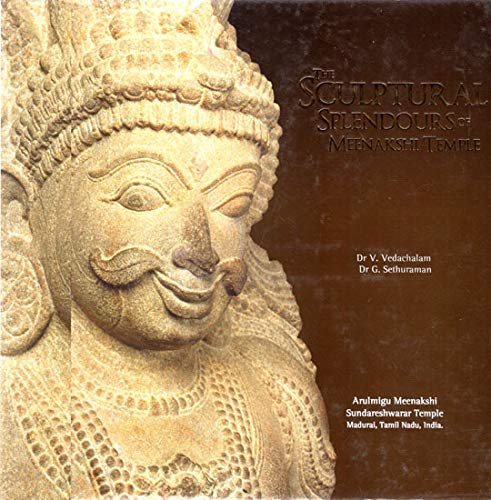
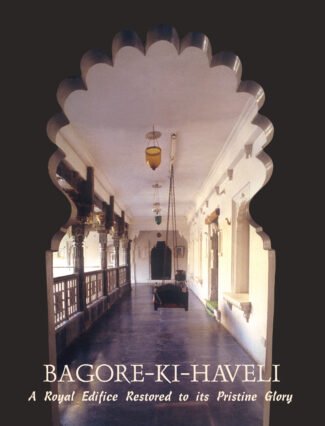
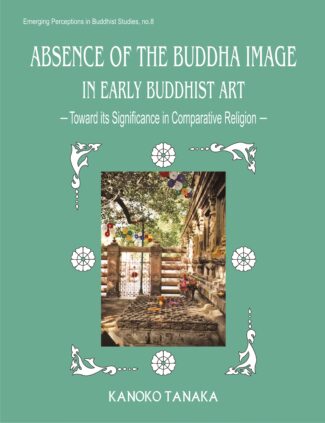
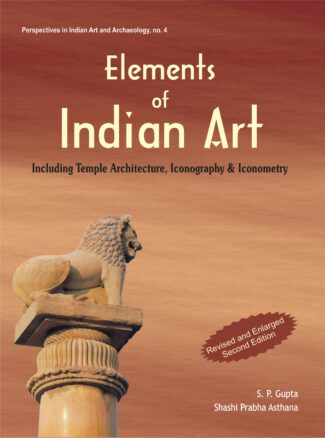

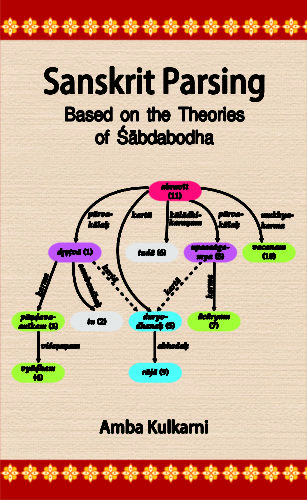
There are no reviews yet.